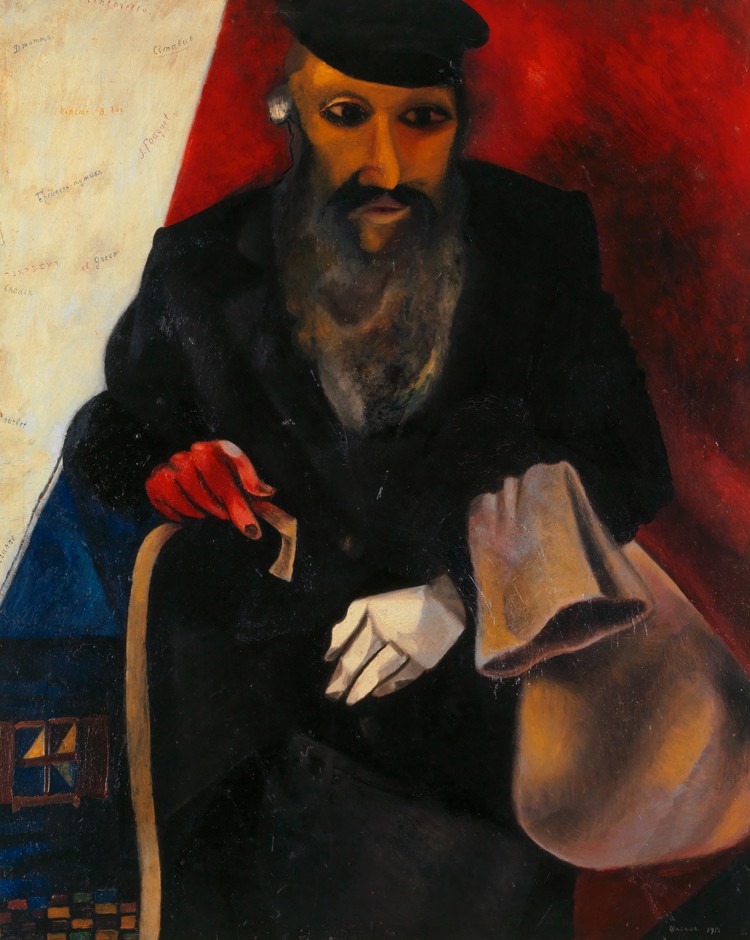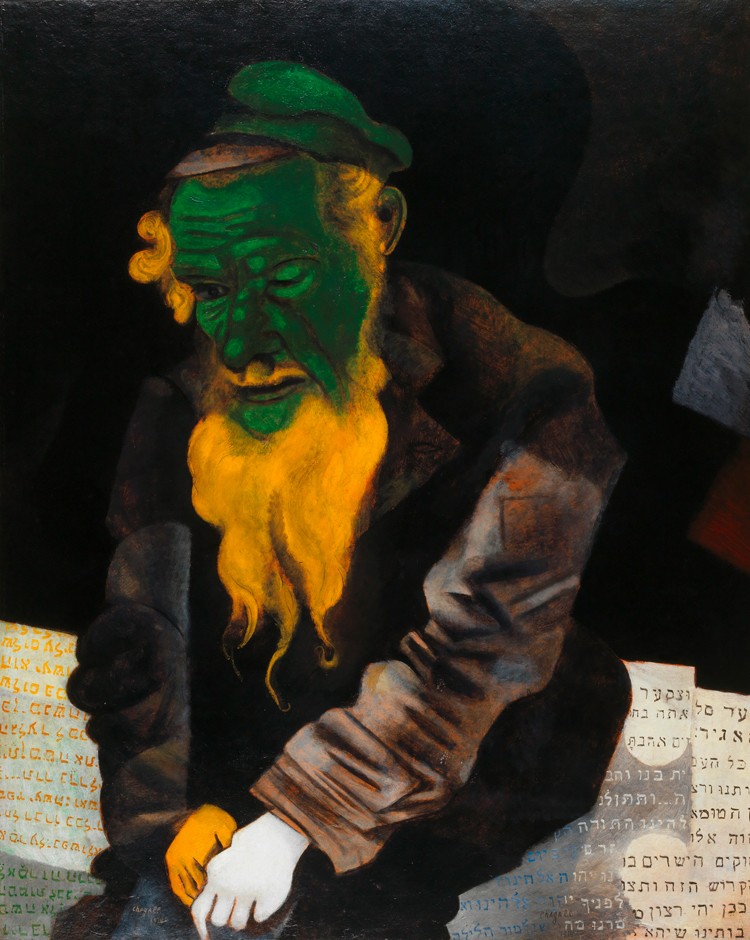
Marc Chagall, Jew in Red, 1914. Oil on cardboard laid down on canvas, 39 3/4 x 31 7/8 in. Im Obersteg Foundation, permanent loan to the Kunstmuseum Basel © 2015 Artists Rights Society (ARS), New York / ADAGP, Paris
Marc Chagall’s three monumental portraits from 1914, Jew in Red, Jew in Black and White, and Jew in Green, are on view in Gauguin to Picasso: Masterworks from Switzerland. Read more about Jew in Black and White here, and Jew in Green here.
Chagall’s Jew in Red is a bearded man holding a cane and a bag of belongings. He has been interpreted as Ahasver, the eternal Wandering Jew, or perhaps even Chagall, the displaced artist—a foreigner in his homeland. On the white curtain at left, in Hebrew, Latin, and Cyrillic, are names of artists that Chagall admired in Paris: Paul Cézanne, Gustave Courbet, Jean-Baptiste-Siméon Chardin, El Greco, Pieter Brueghel the Elder, Jean Fouquet, Vincent van Gogh, Cimabue, Giotto, and Tintoretto.


